
A luna moth caterpillar with an Argentinean peso for scale. For some reason this was the only coin I could find.
I wasn’t going to do another caterpillar post but I haven’t had a chance to key out the springtails for the other post I’m working on, so here you go. As you can see, they’re still growing like fiends. Also, I haven’t been to Argentina in two years; how is that peso still in my wallet?
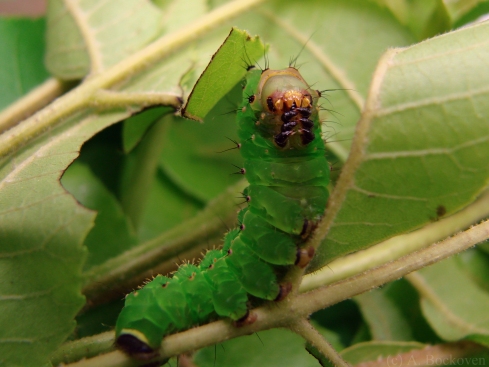
Yesssssss….. Exceeeeellent.
Overnight all my caterpillars turned into evil masterminds. Or so it would appear. Just days before they all appeared to be perfectly innocuous little caterpillars who sometimes tried to chew off their siblings’ faces. But now just look at that caterpillar! He’s clearly up to something.

Someday soon I will be a beautiful butterfly.
I can’t find much in the literature on this reared-head posture–which appears to be pretty common in this family of caterpillars–but popular opinion around the internet seems to be that this is a defensive/camouflage posture to make the caterpillars look less like food to hungry predators. They do resemble little green twigs, although it’s kind of creepy when they’re all lined up in a row staring at you. It also puts them in a good position to employ another defensive response: clicking and puking!

A luna moth caterpillar in feeding posture on a partially eaten leaf.
When disturbed, late instar luna caterpillars and many other bombycoids (silk moths, hawk moths, emperor moths, etc.) make an audible “clicking”, “squeaking” or “crackling” noise with their mandibles and then regurgitate noxious chemicals. The regurgitant is apparently broadly deterrent to both vertebrate and invertebrate predators: in the kind of science experiment I love, Brown et. al (2007) demonstrated that both ants and mice reject food treated with caterpillar puke.
I haven’t heard mine click, but they have spewed brown goop all over when I change their leaves. I chose not to eat them, so it was apparently an effective deterrent for human predators as well.

>>The Luna Moth Saga
Tags: Actias luna, Caterpillars, Fun, Insects, larvae, luna moth saga, Luna Moths, Moths








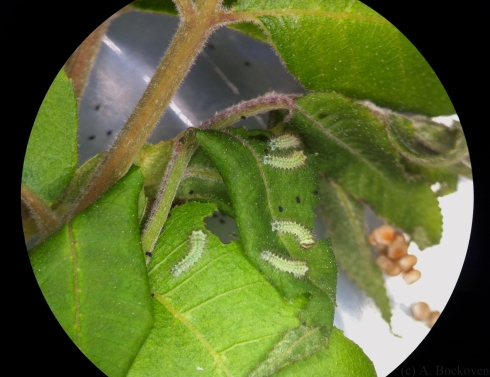

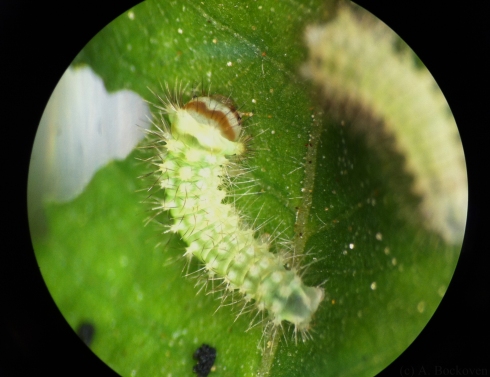
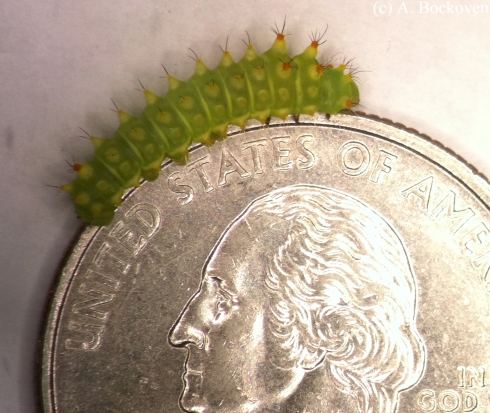






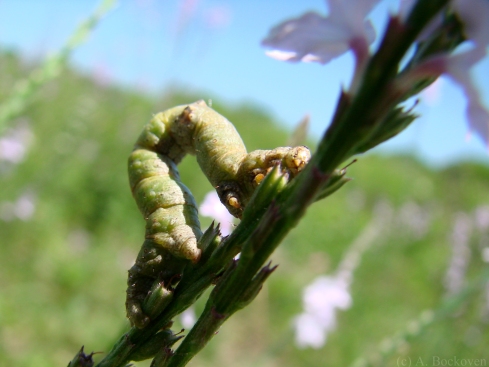


Recent Comments